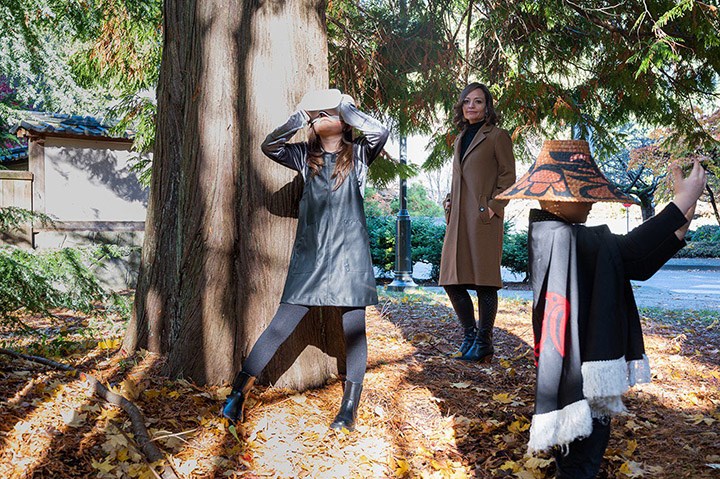A new project launched by a University of British Columbia assistant professor in partnership with the Laxgalts’ap Village Government will use virtual reality (VR) to revitalize Nisga’a culture.
Virtual reality refers to a computer-generated simulation, where a person can use electronic devices like a headset or goggles to interact with an artificial three-dimensional environment.
UBC Department of Education Studies’ Amy Parent is working to produce “Raising Nisga’a Language, Sovereignty, and Land-Based Education Through Traditional Carving Knowledge” (RNL), a multi-year project that will be the first study of the Nisga’a language to develop new language learning tools using VR technology.
The project also aims to repatriate an original house pole from the National Museum of Scotland in Edinburgh and commission a new pole in the Nass Valley.
“[RNL] is an extremely urgent project and one that is necessary to the continued survival of our way of life,” said Parent, who is Nisga’a, in a media release.
“It’s important to me to to show deep reverence to our ancestors by supporting efforts to keep our language and our culture not only alive, but thriving.”
The use of virtual reality will feature interviews with Nisga’a speakers and land-based walking tours. Only public names and seasonal harvesting activities like gathering bark for weaving will be recorded to respect Nisga’a protocols that govern the rights and ownership to traditional stories connected to the land.
The goal is to provide an immersive and virtual way for Nisga’a language learners outside of the Nass Valley to access their traditional territory.
According to the media release, the Nisga’a language is spoken fluently by only five per cent of Nisga’a citizens and is considered endangered.
RNL is partnered with the Laxgalts’ap Village government and will collaborate with Nisga’a language teacher Wal-aks Keane Tait, Elder Jerry Adams, Sim’oogit Duuk and Sim’oogit Niis Joohl.
“It’s a fantastic idea to use VR as a teaching tool to re-familiarize our people with the Nisga’a language in all its aspects,” said Sim’oogit Duuk in the release. “This project is exciting and it’s something I wish we’d been doing a long time ago.”
In addition to the VR aspect of the project, RNL aims to repatriate the Niis Joohl Pole from Scotland, which was taken by Canadian ethnographer Marius Barbeau in 1929. That process is set to begin in 2021, when a committee of Nisga’a citizens from the House of Niis Joohl are scheduled to make an exploratory visit to the museum.
The last aspect of the project is commissioning a new pole by two Nisga’a artists which will reinforce the Nisga’a Nation’s “self governance, pride, memory and cultural sovereignty” and be included as part of the VR content.



